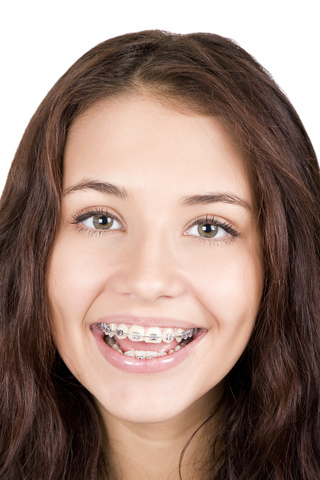September 25th, 2024

Straightening your teeth with traditional braces used to be something of a public affair. While traditional teeth-straightening methods yielded high-quality results, it was also essentially impossible to wear them undetected as you went about your day. The visibility of braces could be especially troubling to teens in the high-stress environment of high school and even during the early years of college.
With Invisalign Teen, Dr. Rubin and our team at Rubin Orthodontics will tell you that many of those concerns are no longer as relevant as they once were. Because Invisalign Teen aligners are constructed out of a plastic that is both smooth and clear, in all likelihood friends and family members won’t even realize the teen is wearing them. The smooth and clear plastic also makes the aligners much more comfortable than traditional braces, which means the teenaged user won’t have to deal with something large and obstructive in his or her mouth.
Additionally, the Invisalign Teen aligners are specifically made to be removable when the need arises. Your son or daughter won’t have to worry about getting food stuck in the alignment trays because they can be pulled out before a meal and popped back in afterwards. Invisalign Teen wearers can remove the aligners before brushing, which allows them to make sure their teeth are free and clear of all obstructions.
Invisalign Teen aligners also allow wearers to keep doing all the activities they have previously enjoyed. If your teen plays sports, for example, he or she won't have to worry about a mouth filled with metal brackets getting injured during play. If your teen plays an instrument, he or she won’t have to worry about traditional braces affecting normal playing techniques. The aligners will remain both comfortable and convenient during all of those activities and more.
If your teen is concerned about physical appearance and worried that braces will adversely affect his or her life for a year or more, Invisalign Teen treatment with Dr. Rubin is definitely the right choice. Teens don’t have to be shy about their smile, won’t have to change any of the activities they normally do, and will still get all the benefits of straight teeth when the process is completed.
For more information about Invisalign Teen, or to schedule an initial consultation with Dr. Rubin, please give us a call at our convenient Far Rockaway office today!
September 25th, 2024

Those challenging teenage years are some of the most self-conscious ones of your life, and concern for your appearance definitely plays a large part. Invisalign is becoming a very popular choice for adolescent patients today, but is it the best choice?
The results from teenage Invisalign users indicate that Invisalign is both effective for teeth straightening and for satisfying that urge to avoid the dreaded “metal mouth.” Dr. Rubin can help you determine if Invisalign is right for you, but this article will explain why so many people are calling Invisalign the best choice for teens today.
Metal-Free Braces
Invisalign is a clear plastic device that fits directly over the teeth. There are no metal parts to mar the look of your smile, and your Invisalign aligners can straighten while allowing your pearly whites to shine through. Any teen will be the first to tell you that appearance is a top concern, so this is an excellent choice. People don’t even need to know you’re straightening your teeth with Invisalign.
Eat, Brush, and Floss Easily
Another particularly attractive aspect of Invisalign for most teenagers is the freedom it allows. While traditional metal braces can make eating, brushing, and flossing difficult, this is not the case with Invisalign. The aligners are easily removable for these activities, which gives teens the freedom they desire to live life as usual.
More Free Time
Invisalign Teen aligners need to be checked and adjusted at Rubin Orthodontics less frequently than traditional braces. This allows for fewer appointments, something that is really important to teens. Having your teeth straightened is no reason to forgo activities or make room in your schedule for constant office visits when you choose Invisalign.
Learn more about Invisalign Teen at our Far Rockaway office!
September 24th, 2024

You can probably see how teeth straightening can make your smile more attractive, but you might be wary of how Invisalign Teen treatment works. If you’re like most teens at our Far Rockaway office, you love hanging out with your friends, and you don’t want to be different, watch what you eat, or worry about how you look. Invisalign Teen has several benefits over traditional metal braces that can make your treatment easier.
People won’t know you’re wearing them.
Invisalign Teen consists of clear trays that are virtual impossible for others to see. Chances are, the only people who know that you are getting your teeth straightened will be your family and any of your friends whom you choose to tell. You won’t need to answer to “Tinsel Teeth” and “Metal Mouth” as some of your classmates with metal braces do.
You can eat what your friends eat.
You take your Invisalign Teen aligners out of your mouth for meals and snacks, so you can eat just like you normally would. You don’t need to worry about food getting stuck in your braces or leading to a bracket popping off. Unlike with braces, you can enjoy the following foods with your friends during Invisalign Teen straightening treatment:
- Popcorn at the movies
- Trail mix with dried fruit when you’re hanging out together
- Ribs and chicken wings at a party
- Eating a peanut butter sandwich, apple, and carrot sticks for lunch
You can take care of your teeth more easily.
It would be a shame if you took the trouble to straighten your teeth and then found out that you had developed tooth decay while wearing braces. This is less of a problem with Invisalign Teen aligners because they are removable. You can brush and floss your teeth as normal just by taking the trays out of your mouth.
Getting straighter teeth can be a serious confidence-booster in the long run, and with Invisalign Teen, the treatment isn’t that bad. You can wear these clear aligners without letting people know that you’re straightening your teeth, and they won’t interfere with your diet or dental hygiene.
September 5th, 2024

These days, Americans everywhere are putting greater emphasis on health and self-improvement, and more people are seeking orthodontic treatment to improve their smile. September happens to be Self-Improvement Month, and our team at Rubin Orthodontics knows that orthodontic treatment is an investment in self-improvement that will provide benefits for a lifetime. Recent advances in orthodontia now make treatment more comfortable for many interested in obtaining that beautiful smile.
Not only does orthodontic treatment give you a beautiful smile, it can also benefit your dental and general health. If teeth are poorly aligned, removing plaque and tartar by brushing and flossing may be difficult. A bad bite may result in fractured or excessively worn tooth surfaces, and the extra stress caused by a bad bite may even result in problems with your jaw joints.
If you’ve been thinking about getting that perfect smile, Dr. Rubin would love to have you visit for an initial consultation. Please give us a call to schedule a visit! See you soon!





